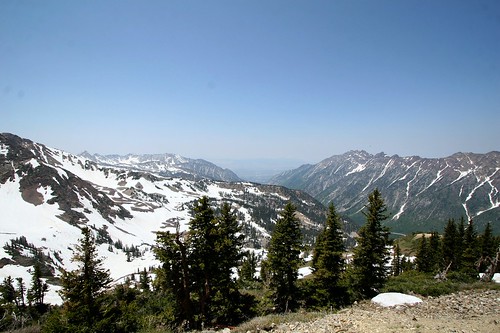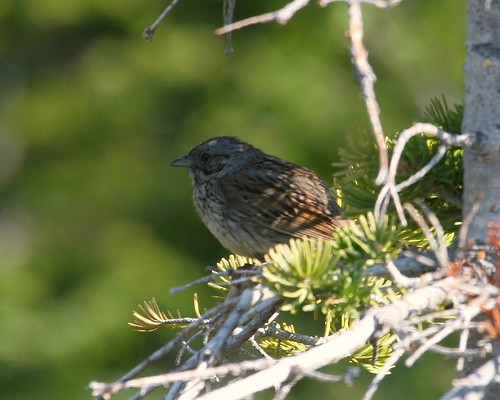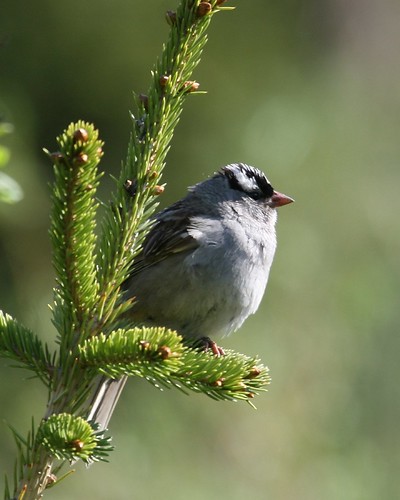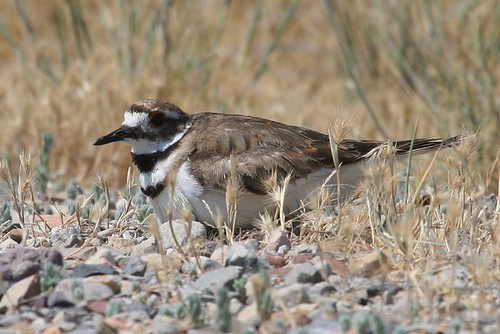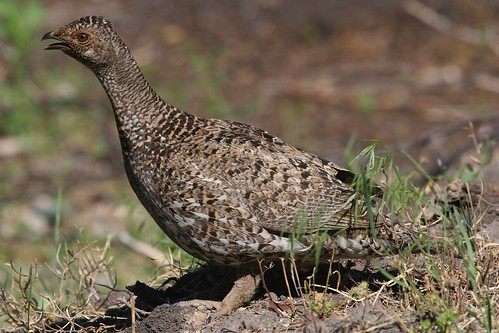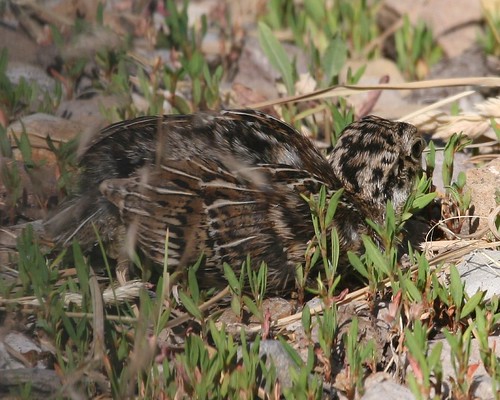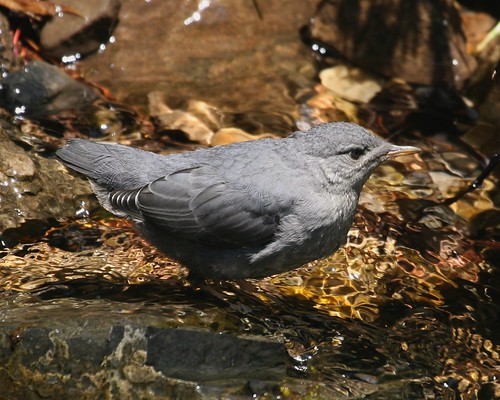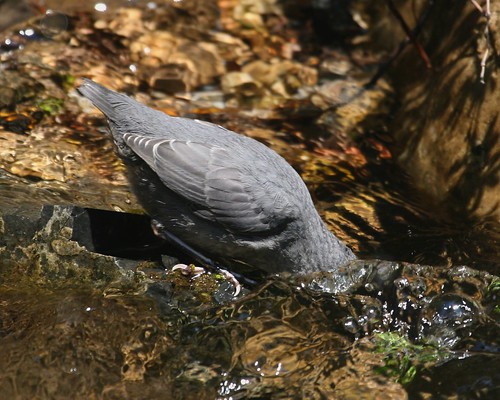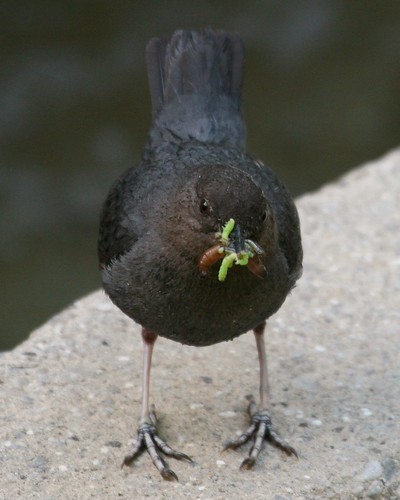Anchorage
It is time for another trip! Earlier this year, my girlfriend and I decided to visit Alaska. Today is the start of that trip. We fly across the country to Anchorage, and will then spend a week exploring Anchorage, Seward and the Kenai Peninsula. We hope to see lots of wildlife, enjoy the fantastic scenery and relax a bit. Maybe I will take some pictures too :-)
Cicada
It was Friday night, around 11pm. I had just returned from the airport after a business trip. It had been a long day. It started around 5:30am that morning, and I was relieved to finally be home as I shambled, zombie-like, up the sidewalk towards my front door. I had taken one step up onto the front stoop, however, when my brain registered something that my eyes had seen just a second ago. That familiar ping! of curiosity had forced its way through the fog of thought that was focused nearly exclusively on "go to bed!".
I took a step back and looked more closely. Attached to the wood of the stoop, just a few inches from the ground, was a cicada, newly emerged from the shell that it wore as a nymph. As if I had gotten a jolt of adrenaline, my mind almost immediately switched from "go to bed!" to "take a picture!".
I excitedly went inside, dumped my travel and work baggage, and began to collect the various pieces of photographic gear that I thought I would need. Do I have a charged camera battery? Which lenses should I use? Tripod? Oh yeah...it is dark outside! How will I get light on my subject? Where is that remote shutter release?
This was a challenging photographic exercise for me. While the cicada patiently sat, letting itself dry on my front stoop, I fumbled through a multitude of attempts at photographing this bug. I tried hand holding the camera at close range, and I tried it on a tripod a couple feet away. I tried it using light from only the ground level accent lights that run along the front of my house, and I tried using a flashlight, propped up on a nearby chunk of mulch (hmmm...maybe I need to invest in an external flash). I thought the flashlight was going to give me my best chance, but then its batteries started fading, and my light slowly dwindled to a pale yellowish glow. For over an hour, I sat...still in my work clothes...in the mulch of my front yard, reveling in the challenge of photographing this bug in the dark of near midnight.
Ultimately, I got something that I liked. I used a 100-400mm lens, on a tripod a few feet back from the bug. Since my flashlight was fading, I used a timed exposure. I feel like I got lucky on the focus...it was dark and the camera had very little light to use for its auto-focus feature. I manually focused the shot, but had to try multiple times...tweaking the focus just a bit after each shot until I felt like I had gotten something satisfactory.
Here is my model, perched on its old skin.
I took a step back and looked more closely. Attached to the wood of the stoop, just a few inches from the ground, was a cicada, newly emerged from the shell that it wore as a nymph. As if I had gotten a jolt of adrenaline, my mind almost immediately switched from "go to bed!" to "take a picture!".
I excitedly went inside, dumped my travel and work baggage, and began to collect the various pieces of photographic gear that I thought I would need. Do I have a charged camera battery? Which lenses should I use? Tripod? Oh yeah...it is dark outside! How will I get light on my subject? Where is that remote shutter release?
This was a challenging photographic exercise for me. While the cicada patiently sat, letting itself dry on my front stoop, I fumbled through a multitude of attempts at photographing this bug. I tried hand holding the camera at close range, and I tried it on a tripod a couple feet away. I tried it using light from only the ground level accent lights that run along the front of my house, and I tried using a flashlight, propped up on a nearby chunk of mulch (hmmm...maybe I need to invest in an external flash). I thought the flashlight was going to give me my best chance, but then its batteries started fading, and my light slowly dwindled to a pale yellowish glow. For over an hour, I sat...still in my work clothes...in the mulch of my front yard, reveling in the challenge of photographing this bug in the dark of near midnight.
Ultimately, I got something that I liked. I used a 100-400mm lens, on a tripod a few feet back from the bug. Since my flashlight was fading, I used a timed exposure. I feel like I got lucky on the focus...it was dark and the camera had very little light to use for its auto-focus feature. I manually focused the shot, but had to try multiple times...tweaking the focus just a bit after each shot until I felt like I had gotten something satisfactory.
Here is my model, perched on its old skin.
Wildflowers
My camera played second fiddle to my binoculars during my week at the this year's ABA convention. There were too many new birds for this Virginian, and my bins were much more suited for keeping up with them than my camera. But this was my fourth ABA convention, so I already knew that, by the time the last day got here, I would be tired and it would be difficult to keep focused on the birds.
So, when the last day of the convention got here, and focusing on birds, birds and more birds became more and more challenging, my thoughts switched back to my camera. And, much to my delight, I found myself surrounded by wildflowers. While most of the group still focused on various feathered things, I began to focus on flowery things. I wasn't the only one (if you follow that link and look at Steve's impressive photos, I am the "conventional DSLR guy" in the third from last photo...my back only ached a little after that shot :-).
Here is a collection of eight flowers that I managed to capture with my camera. Click on them to see larger sizes in Flickr. I managed to put names on some of these, but just barely. I really do not know what some of these beauties are.


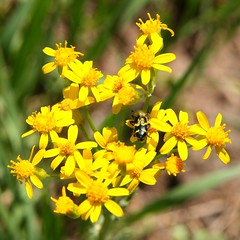
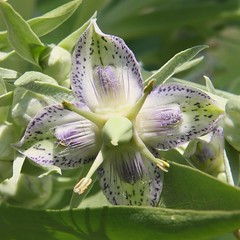
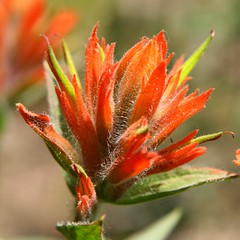
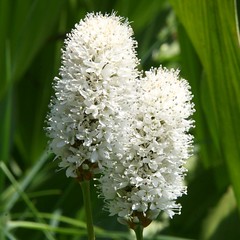

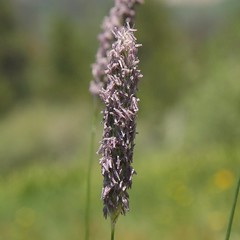
So, when the last day of the convention got here, and focusing on birds, birds and more birds became more and more challenging, my thoughts switched back to my camera. And, much to my delight, I found myself surrounded by wildflowers. While most of the group still focused on various feathered things, I began to focus on flowery things. I wasn't the only one (if you follow that link and look at Steve's impressive photos, I am the "conventional DSLR guy" in the third from last photo...my back only ached a little after that shot :-).
Here is a collection of eight flowers that I managed to capture with my camera. Click on them to see larger sizes in Flickr. I managed to put names on some of these, but just barely. I really do not know what some of these beauties are.








Hidden Peak
I mentioned several posts back that I rode the tram from Snowbird up to the top of Hidden Peak. The ski village of Snowbird sits at about 7700 feet, but Hidden Peak is 11000 feet. I was happy to see that the tram was enclosed. If it had been only a simple ski lift, I might not have made the trip. Even in the tram, I politely, but firmly, held on with both hands and waited for the ride to the top to complete.
The view at the top was worth the trip, but it was also free for me (thank you, American Birding Association). There was still plenty of snow lying about. I heard several folks say that it is fairly late for this much snow to still be on the ground, a symptom of the amounts of snow that the area received over the previous winter. That melting snow generates angry streams of runoff in the valleys below.
This picture shows the view from Hidden Peak looking west. The valley on the right side is Little Cottonwood Canyon. The southern end of Salt Lake City is in the distance, only visible to those with excellent vision or suitable imagination.
Here is a photo looking back down to Snowbird, located at the upper end of Little Cottonwood Canyon. If you squint your eyes just so (or click through to the photo in Flickr so that you can look at the larger sizes), you can see the hotel (fifteen stories tall, I think) that I stayed in during this trip.
The view at the top was worth the trip, but it was also free for me (thank you, American Birding Association). There was still plenty of snow lying about. I heard several folks say that it is fairly late for this much snow to still be on the ground, a symptom of the amounts of snow that the area received over the previous winter. That melting snow generates angry streams of runoff in the valleys below.
This picture shows the view from Hidden Peak looking west. The valley on the right side is Little Cottonwood Canyon. The southern end of Salt Lake City is in the distance, only visible to those with excellent vision or suitable imagination.
Here is a photo looking back down to Snowbird, located at the upper end of Little Cottonwood Canyon. If you squint your eyes just so (or click through to the photo in Flickr so that you can look at the larger sizes), you can see the hotel (fifteen stories tall, I think) that I stayed in during this trip.
Silver Lake
One of my field trips during the ABA convention included a visit to a place called Silver Lake, located next to the Brighton Ski Resort. It was nestled in the Wasatch Mountains, just east of Salt Lake City. This place was quiet and tranquil and beautiful, but mostly gave me the impression of a ski resort that was patiently waiting for winter to return. Ski resorts in summer are somewhat like beaches in the winter: ghosts of their full vibrant selves.
There were plenty of good bird watching moments on this trip. We had several looks at flycatchers, warblers and sparrows, most of which were species that I was not going to see back home. And when a Northern Goshawk flew right over our group, everyone was pretty darn excited. I was too focused on seeing that bird through my bins to have even considered taking photo.
I did, however, get a few photos from Silver Lake. For me, this was a challenging day for photography. It started with a Mule Deer that we spooked upon first arriving at the lake. I snapped several photos, but all of them were just not quite in focus. Maybe it was still too early, and my brain was just not quite in focus? Then, as we wound around the lake, the light always seemed to be harsh and coming from the wrong direction. Or, the light was shy, and my subject sat in shadows. It seems that me and my camera were not on good terms this day.
Here is that Mule Deer we spooked. Their odd way of running, with all four feet coming down at the same time, is interesting to watch. Apparently the term for this style of running is "stotting". My photo caught the deer in "mid-stot" :-)
Finally, here are two photos of sparrows. The group had been seeing and hearing Lincoln's and White-crowned Sparrows all morning. Towards the end of our walk around the lake, I had opportunities to get photos of each. The Lincoln's Sparrow sat cautiously on the shadowy side of a tree, and the White-crowned Sparrow sat boldly in the full sun.
There were plenty of good bird watching moments on this trip. We had several looks at flycatchers, warblers and sparrows, most of which were species that I was not going to see back home. And when a Northern Goshawk flew right over our group, everyone was pretty darn excited. I was too focused on seeing that bird through my bins to have even considered taking photo.
I did, however, get a few photos from Silver Lake. For me, this was a challenging day for photography. It started with a Mule Deer that we spooked upon first arriving at the lake. I snapped several photos, but all of them were just not quite in focus. Maybe it was still too early, and my brain was just not quite in focus? Then, as we wound around the lake, the light always seemed to be harsh and coming from the wrong direction. Or, the light was shy, and my subject sat in shadows. It seems that me and my camera were not on good terms this day.
Here is that Mule Deer we spooked. Their odd way of running, with all four feet coming down at the same time, is interesting to watch. Apparently the term for this style of running is "stotting". My photo caught the deer in "mid-stot" :-)
Finally, here are two photos of sparrows. The group had been seeing and hearing Lincoln's and White-crowned Sparrows all morning. Towards the end of our walk around the lake, I had opportunities to get photos of each. The Lincoln's Sparrow sat cautiously on the shadowy side of a tree, and the White-crowned Sparrow sat boldly in the full sun.
Killdeer
I have forgotten exactly where I saw this Killdeer. It was on some piece of private land in the basin just west and south of Salt Lake City. Our group was traveling on a gravel road via bus, stopping occasionally to get a glimpse at some shy sparrow, or distant raptor. This Killdeer had built its nest on the side of that gravel road. Being on private land, I imagine that the gravel road did not get much traffic, so the Killdeer took advantage of this prime piece of Killdeer real estate without realizing its peril. Luckily it was on the side of the road, far enough over to be easily avoided - even if you had no clue the bird was there, sitting on eggs in the gravel.
The guide for our field trip pointed the bird out to us. The bird tolerated us at a distance, but if anyone got too close it would stand up and nervously watch. I suspect it was debating whether it should begin its act of feigned, injured retreat in order to draw attention away from its nest. We gawked, and tried to keep a respectful distance. After my encounter with the Dusky Grouse, this was a far happier encounter. But I still felt like an intruder, bumbling about in the house of a complete stranger while I selfishly took pictures of them and their decor.
The guide for our field trip pointed the bird out to us. The bird tolerated us at a distance, but if anyone got too close it would stand up and nervously watch. I suspect it was debating whether it should begin its act of feigned, injured retreat in order to draw attention away from its nest. We gawked, and tried to keep a respectful distance. After my encounter with the Dusky Grouse, this was a far happier encounter. But I still felt like an intruder, bumbling about in the house of a complete stranger while I selfishly took pictures of them and their decor.
Dusky Grouse
If you pick up a field guide and look for Dusky Grouse, you might not find the bird listed. The same is true of Sooty Grouse. That is because, prior to 2006, both of these birds were considered the same species: Blue Grouse. After some really smart people, however, researched [PDF] the wild and crazy world of Blue Grouse DNA, it was decided that Blue Grouse was really two distinct species.
Splitting a single species into two species has an interesting effect on bird watchers who keep thorough lists of the birds they have seen. On one day, their list has Blue Grouse, but on the next day that Blue Grouse is really supposed to be either a Dusky Grouse or a Sooty Grouse. If you really knew all the gory Grouse details, you may have been able to confidently change your Blue to one of the two new species. But if you didn't, well...you might be inclined to cross it off your list and try to see both a Dusky and a Sooty just to be complete. Either way, it was likely that you needed to either a Dusky or a Sooty or both to cover what was before simply a Blue.
I had never seen a Blue Grouse, so seeing a Dusky Grouse was all around new to me. This sighting, however, was really very bittersweet.
A Dusky Grouse, with several chicks in tow, decided to cross a two lane highway without recognizing the danger of a large bus driving in the downhill direction. The bus was full of bird watchers who cringed as an attempt was made to stop before something unfortunate happened to the birds. This story does not have a happy ending.
When the bus finally stopped, we got out to survey the Grouse family. One chick did not make it across the road, and the mother was unsure what to do. She stood on the side of the road obviously aware that she was missing one chick. Her other chicks hunkered down in the grass while she debated whether to keep moving into the woods, or to wait for that last chick.
Of course, nothing could be done for that chick. As I snapped my photos of the mother and one of her chicks I was also torn. On the one hand, I was excited to have a chance to see a Dusky Grouse and to take these photos. But on the other hand I felt pretty lame taking pictures of a stressed bird who just lost a chick.
Splitting a single species into two species has an interesting effect on bird watchers who keep thorough lists of the birds they have seen. On one day, their list has Blue Grouse, but on the next day that Blue Grouse is really supposed to be either a Dusky Grouse or a Sooty Grouse. If you really knew all the gory Grouse details, you may have been able to confidently change your Blue to one of the two new species. But if you didn't, well...you might be inclined to cross it off your list and try to see both a Dusky and a Sooty just to be complete. Either way, it was likely that you needed to either a Dusky or a Sooty or both to cover what was before simply a Blue.
I had never seen a Blue Grouse, so seeing a Dusky Grouse was all around new to me. This sighting, however, was really very bittersweet.
A Dusky Grouse, with several chicks in tow, decided to cross a two lane highway without recognizing the danger of a large bus driving in the downhill direction. The bus was full of bird watchers who cringed as an attempt was made to stop before something unfortunate happened to the birds. This story does not have a happy ending.
When the bus finally stopped, we got out to survey the Grouse family. One chick did not make it across the road, and the mother was unsure what to do. She stood on the side of the road obviously aware that she was missing one chick. Her other chicks hunkered down in the grass while she debated whether to keep moving into the woods, or to wait for that last chick.
Of course, nothing could be done for that chick. As I snapped my photos of the mother and one of her chicks I was also torn. On the one hand, I was excited to have a chance to see a Dusky Grouse and to take these photos. But on the other hand I felt pretty lame taking pictures of a stressed bird who just lost a chick.
American Dipper
American Dippers are cool birds. Their gray plumage might be considered plain by some, but I think that is outweighed by how well they have adapted to a specific environment. Dippers are songbirds, not waterfowl, that have a preference for fast moving mountain streams. They live year round next to their chosen stream, feeding off of insect larvae that are found in those streams. They actually submerge themselves in the water in their search for food. To handle that cold, fast moving water, they have more down, a larger preening gland that provides oil for waterproofing feathers, the ability to close their nostrils under water, and an extra eyelid to help them see under water.
At first, I thought that Dippers got their name from their aquatic habits. In other words, they liked to "take a dip" in the water. But alas, my guess was wrong. The Dipper's name comes from its habit of repeatedly bobbing its whole body up and down during pauses in its search for food. In my brief bit of searching online, I mostly read that the behavior was still an unsolved mystery. My favorite theory was that the bobbing was "just fun" :-)
While in Utah for the ABA convention, I saw American Dippers on several occasions. They were fascinating to watch. I had the opportunity to get photos of an American Dipper at two locations. The first was during a brief stop at Sundance Resort. A small stream flowing next to a path had a Dipper that was actively feeding. The second photo shows that bird with its head under water looking for a meal. American Dippers will not only stick their head under water like this bird, but also walk under water on the bottom of the stream. I did not witness the walking under water trick on this trip. Hopefully I can change that on some future trip.
The last photo here is of an American Dipper at Vivian Park. This bird had a nest with chicks under a small foot bridge. The group I was with stood quietly on the bridge and waited for the bird to come back with a beak full of food. The bird would come back to the bridge, stop to see what our intentions were, decide that hungry chicks were more important than gawking birdwatchers, and then fly under the bridge to serve a meal.
At first, I thought that Dippers got their name from their aquatic habits. In other words, they liked to "take a dip" in the water. But alas, my guess was wrong. The Dipper's name comes from its habit of repeatedly bobbing its whole body up and down during pauses in its search for food. In my brief bit of searching online, I mostly read that the behavior was still an unsolved mystery. My favorite theory was that the bobbing was "just fun" :-)
While in Utah for the ABA convention, I saw American Dippers on several occasions. They were fascinating to watch. I had the opportunity to get photos of an American Dipper at two locations. The first was during a brief stop at Sundance Resort. A small stream flowing next to a path had a Dipper that was actively feeding. The second photo shows that bird with its head under water looking for a meal. American Dippers will not only stick their head under water like this bird, but also walk under water on the bottom of the stream. I did not witness the walking under water trick on this trip. Hopefully I can change that on some future trip.
The last photo here is of an American Dipper at Vivian Park. This bird had a nest with chicks under a small foot bridge. The group I was with stood quietly on the bridge and waited for the bird to come back with a beak full of food. The bird would come back to the bridge, stop to see what our intentions were, decide that hungry chicks were more important than gawking birdwatchers, and then fly under the bridge to serve a meal.
Subscribe to:
Posts (Atom)


